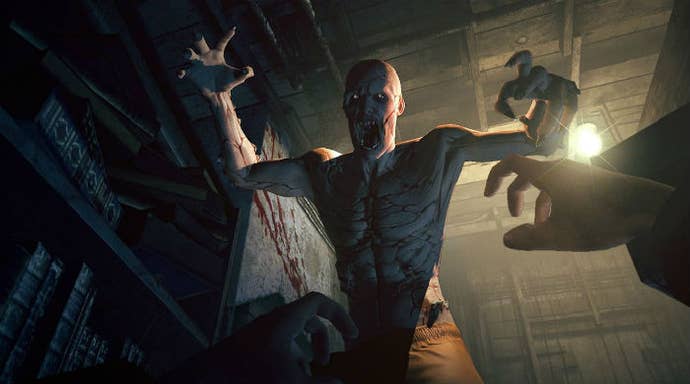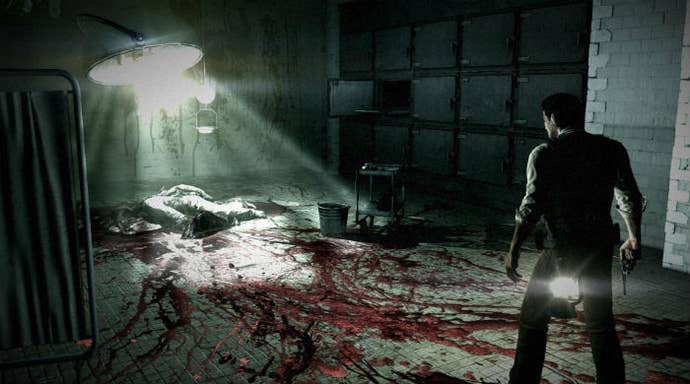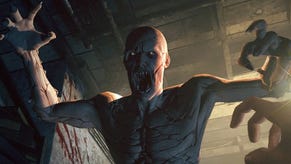Beyond the Shock in Horror: Changing Up the Game
Jump scares are the standard for survival horror. But developers are starting to realize that there are better ways to terrify.
This article first appeared on USgamer, a partner publication of VG247. Some content, such as this article, has been migrated to VG247 for posterity after USgamer's closure - but it has not been edited or further vetted by the VG247 team.
Your favorite horror franchise is lying to you.
With every monstrosity that bursts through the window in a dark hallway, every jump scare that prompts your blood pressure to rise like mercury in a thermometer, and every room that plunges you into darkness while miscreants attempt to sniff you out, games are furthering a clever ruse fabricated years ago: That terror can only truly stem from being caught off-guard.
You're under the impression that a lurking, bloodthirsty beast in the corner of a dimly-lit alleyway is the worst it can possibly get, or that you should scream bloody murder when a shape materializes from what you thought were just shadows. You’re being groomed to think that this is how games should terrify you, that this is the norm. You want the truth? That’s only half of what’s out there, and it’s an acceptable method of frightening players, if not the laziest.
We can do better.
We’ve done better. In fact, we’re only scratching the surface, just beginning to see developers utilizing new strategies while tackling different elements of psychological and survival horror. This new breed of games is succeeding too, pushing out blockbusters like Dead Space and Resident Evil to explore new avenues and offer new perspectives on what we previously thought were the limits of what horror is to the medium.

You’ll find glimmers of hope when you look just beyond the horizon of triple-A hype. Bloggers, YouTube Let’s Play commentators, and Twitter users buzzed about how Outlast, a PC exclusive, could be one of the scariest games they’ve ever experienced. On the surface, Outlast seemed like just another hackneyed attempt at terrifying players: “Paranormal” activity, a camcorder acting as your only weapon against the inevitable threats, and film grain to boot. It subscribes to the very same notions that so many other found footage-type adventures do, except you have no way to defend yourself. The catch is, you never know when you’re going to be forced to run for your life. Chase sequences hardly work because 90% of the time you’re armed to the teeth and can blow away whatever threat you’re facing. What happens when you remove that control, though?
That’s what Outlast shows us. It strips you of even the smallest luxury, and that’s why it works so well. The mental patients and their gory mishaps may not be as grotesque as they could be, and the environments not as varied, but Outlast succeeds in raising your heart rate by implementing an amalgam of ideas rather than the same old tired tropes one after another. Because of this, that “?don’t turn that corner?!” ?mechanic,? ?which places the gamer in a precarious position, is negated entirely here. It feels fresh, like there’s more to come. And there has to be more in a genre that celebrates diversity, innovation, and the all-important “something new” we clamor for when we see the same games repurposed and repackaged every year.
The problem is delivering it, and thinking of new ways to do administer pure, unadulterated terror. The Oculus Rift is a promising vehicle for such, and has demonstrated several attempts at integrating your real-world actions and movements into the very game that you’re playing. YouTuber Markiplier demonstrates these games best in a series of Let’s Play videos in which he explores Dreadhalls in real time, which does an excellent job of demonstrating how the Oculus headgear allows you to interact with your environment.
Another experimental title on the horizon is Alone, which takes place in a fictional home. The player is actually sitting at home with their own video game on the screen before him, creating a bit of altered reality that begins to deteriorate. Are the sounds you’re hearing in-game or are they outside your own home? How do you know? Are you brave enough to venture outside to find out? It’s a chilling premise with plenty of potential, and it will undoubtedly leave an impression on anyone who decides to take the plunge.
?So if we know the problem, why not solve it? Why aren’t developers taking cues from these diamonds in the rough to change things up a bit? It’s not that simple. Shinji Mikami, director of The Evil Within, knows that true horror doesn’t always sell. A recent interview with IGN reveals the survival horror mastermind’s thoughts on returning to the genre, where he divulges that the excellent GameCube remake of Resident Evil simply didn’t sell well, and if it had, we’d have known a much different Resident Evil 4.

“The Resident Evil remake is actually one of my favorites of the series too. [...] Maybe there weren't many people ready to accept that. Because of the reaction to the Resident Evil remake, I decided to work more action into Resident Evil 4. Resident Evil 4 would have been a more scary, horror-focused game if the remake had sold well.” He went on to describe how fear in the games was “number one,” but this was abandoned when it came to the fourth entry in the series: “[For the] first time, in Resident Evil 4, I told the team that fun gameplay is the most important thing. That’s what I said. Then the second thing [would be ] nothing. And then the third thing is to be scary. That’s what I said to the team. That all came out of the commercial failure of the Resident Evil remake. And then of course Resident Evil 4 sold really well.”
Developers are keenly aware of the fact that we need a change, but so many appear to be locked into cranking out the same sorts of material we’ve seen over and over in order to turn a profit. But humans require stimulation. ?The adrenaline rush one receives from a moment of sheer terror is unmatched. It’s similar to the feeling one gets from being completely engrossed in a horror movie,? but ?frightening video games offer a much more palpable feeling of dread and anxiety than any movie ever could.? ?
Rather than passively enjoying the action on screen where a screaming woman is about to have her head lopped off,? ?gamers are thrown right into the action.? ?Suddenly,? ?the trepidation of being hunted down by a furious atrocity in the night is not as distant as watching a movie tends to give the impression.? ?Being forced to navigate your digital avatar through a dark,? ?ominous room when accompanied by eerie,? ?atmospheric music and surrounded by things that go bump in the night is more than a few degrees scarier than watching some vapid blonde attempt to outrun Freddy or Jason. But there has to be more involved. There have to be changes before horror can truly evolve, twisting and changing into something that can keep up with the times.
The next time you boot up? your favorite horror game,? ?ask yourself why it is you subject yourself to such abominations lumbering toward you as you fend them away with a lead pipe or nothing but a mystical camera.? ?Do you seek to feel?? ?Do you enjoy the silence?? ?Whatever your reasons are,? ?it’s always a treat to sit back in that easy chair,? ?flip off those pesky lights,? ?and let the game take control of your senses.
Are you truly being terrified? Really?
















